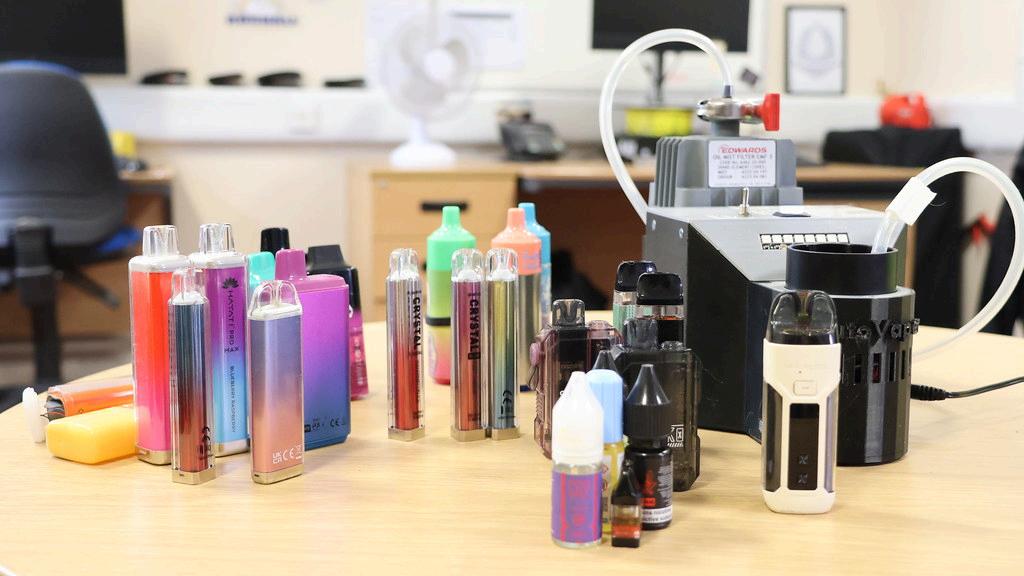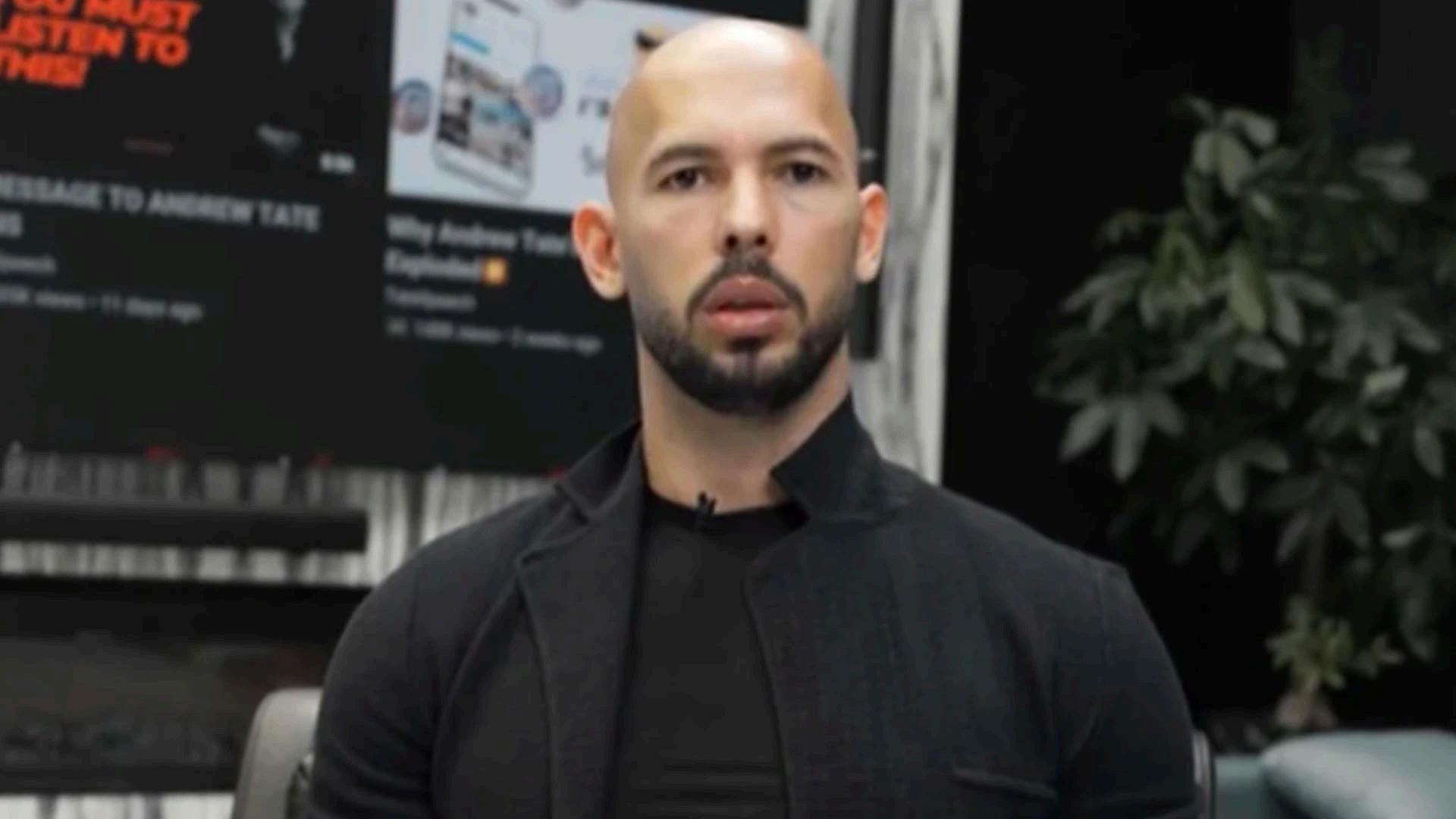

Keeping our comm Safeguarding at Honywood School

Welcome to the September edition of our monthly safeguarding newsletter Each month we provide an update containing reminders about how we approach safeguarding at Honywood as well as useful links to support families out of school - many links we share each month so they are easy to find for you. If you have a question about safeguarding our hope is that our monthly bulletins will be able to provide the answer or at least some signposting to where you may get the answer This month we are drawing your attention to the topic of Vapes, THC and spiking
Who can learners talk to at School?
● Learning Group Leader
● Cohort Leaders
● Pastoral Leaders
● Class teachers
● Learner Reception
● Learning Support Assistants
● Learner Wellbeing App on iPad


● Senior Leadership Team
● Mrs Nichols - Safeguarding Lead
● Mr Smith - Deputy Safeguarding Lead
● Mrs Hickford - Deputy Safeguarding Lead
● Mr Caygill - Deputy Safeguarding Lead
● Mr Saunders - Headteacher



Mrs Nichols Mr Smith Mrs Hickford Mr Caygill Mr Saunders
Learner Information
Please refer to the Honywood Wellbeing app on your school iPad, link below https://sites google com/honywoodschool com/learnerwellbeing/home
If you need Wellbeing & Mental Health support out of school, please contact:
YOUNG MINDS - text YM to 85258, or https://youngminds.org.uk/find-help Kooth - your online mental wellbeing community https://wwwkooth com/ Child and Adolescent Mental Health Service 0300 300 1600 to get in touch directly. For the out of hours crisis support, please call the general NELFT switchboard on 0800 953 0222. and ask for the CAMHS Crisis Support Service
Childline 08001111
Weekly Bullying and Child on Child Abuse reporting form
All learners and parents receive a weekly email link and reminder that if they have any concerns about the behaviour of any learners in school that could be considered bullying and/or child on child abuse, they may report it using the following link: https://docs google com/forms/d/e/1FAIpQLSfs8npY9aDQcY3WsRttFcI5PB0NGPaBgKR4aRdtWdr HlogNWQ/viewform
If you have any questions about the form before completing it please feel free to email scaygill@honywoodschool.com Similarly if you have any feedback regarding the structure/questions of this form please do share this too as the form could evolve over the coming weeks with any feedback shared
Parents/Carers
For support and information please contact:
For information about support for children, young people and families please see the Essex County Council website
If you are a parent or carer, child or young person and you need support, you can phone 0345 603 7627 and ask for the Children's Line
Useful General Policies
Safeguarding Policy
https://www.honywoodschool.com/page/?title=SAFEGUARDING&pid=146
KCSIE September 2024
https://wwwgovuk/government/publications/keeping-children-safe-in-education--2
Responding to Harmful Sexual Behaviours Policy
https://wwwhonywoodschool com/attachments/download asp?file=587&type=pdf
Vaping
Vaping has gotten much more popular among teenagers in the past few years Now, many more teenagers use e-cigarettes, like the brand JUUL, than traditional cigarettes There are restrictions on the sale and advertising of e-cigarettes to young people, but many teenagers still use them.
When teens vape, what they’re doing is inhaling steam that comes from hot nicotine liquid E-cigarettes, vape pens and JUULs are all different devices for heating the liquid Research shows that vaping has many medical risks.
E-cigarettes contain a lot of nicotine, which is very addictive Getting addicted to nicotine can make it harder for teenagers to focus and concentrate E-cigarettes also contain chemicals that could cause cancer, and there are many reports of serious lung problems connected to vaping. Additionally, vaping can make teenagers more likely to start smoking regular cigarettes
Unlike regular cigarettes, e-cigarettes don’t have a strong smell, so it’s much easier for kids to use them in secret The kid-friendly packaging and flavours of JUUL and other popular vape brands make vaping look fun, so even kids who wouldn’t try cigarettes may be tempted Teens often think that vaping isn’t dangerous, and it’s easy for underage kids to buy vaping devices online
If you’re worried your child might be vaping, start with a general conversation Try asking if other kids at their school vape, and what they think about it By finding out what they already know, you can start helping them understand the risks This usually works better than just telling them that vaping is wrong. If your child is addicted to vaping, make sure to get care from an addiction specialist Addiction to nicotine from vaping can be even more serious than addiction to regular cigarettes
● Child vaping risks becoming ‘public health catastrophe’ in UK, experts warn | E-cigarettes | The Guardian
● Vaping - is it a risk-free option? - BBC News
● ‘When I see kids vaping, I warn them: that’s what killed my daughter’ | E-cigarettes | The Guardian
What are THC Vapes?
THC can be preloaded into disposable vapes THC can also be mixed with vape liquid and added to refillable vapes or mods Tests have also shown that THC vapes can contain other substances, such as synthetic cannabinoids (spice) and synthetic opioids like nitazenes, which carry a greater level of risk and can lead to increased risk of overdose and death.
Most of the time, people aren't aware that other substances have been mixed into their THC liquid or vape. This makes vaping even more dangerous and significantly increases the risk of overdose.
The information below assumes THC is the only substance found in THC vapes
Read about synthetic cannabinoids
Read about nitazenes
How can vapes containing THC make you feel?
THC affects different people in different ways, and how you’re feeling can impact the effect you get
Generally, THC can:
● Cause nausea or vomiting (‘throwing a whitey’)
● Make you feel hungry (‘the munchies’),
● Make you feel giggly
● Make you feel unmotivated, sleepy or withdrawn
● Cause your eyes become red or irritated
● Make your mouth go very dry
What happens to my body if I use THC vapes often?
Symptoms of using THC vapes include:
● Paranoia, anxiety, and hallucinations
● Seizures (which may lead to a coma)
● Being very tired all the time
● Stomach pains, loss of appetite, or feeling sick
● Severe headaches
● Acting aggressively or violently
Additionally, inhaling vitamin E acetate (a common ingredient in THC vapes) include an ongoing cough, shortness of breath, and chest pains
What do I do if I think someone has overdosed on THC vapes?
If someone shows signs of overdose, put them in the recovery position and get help fast by calling 999, telling emergency services what you know
Signs of THC overdose include:
● Anxiety
● Loss of coordination
● Panic
● Uncontrolled muscle movements
● Increased heart rate
● Vomiting
● Changes to breathing
● Delirium
● Suicidal ideation
● Psychotic symptoms
If you suspect someone has overdosed, it’s always best to administer Naloxone Naloxone reverses the effects of opioid drugs Drugs bought illicitly can contain a mixture of substances, including opioids like nitazenes, so use naloxone if you have it. If someone hasn’t overdosed on opioids, naloxone won’t harm them.
You can get a naloxone kit and training on how to use it from your local WithYou service. More information about naloxone, including how to use it
https://www.theguardian.com/society/article/2024/jul/25/one-in-six-vapes-confiscated-at-english-sc hools-spiked-with-zombie-drug
https://wwwbbc co uk/news/health-68760301
https://wwwbath ac uk/announcements/english-school-children-unwittingly-smoking-spice-spiked-v apes-finds-university-of-bath/
Spiking
What is spiking?
Spiking is a crime The law states that:
● it is a crime to maliciously administer, cause to administer or cause to be taken by any other person any poison or destructive or noxious thing, such as to endanger their life, cause them grievous bodily harm, or intentionally injure, aggrieve, or annoy them
Examples of spiking include:
● putting alcohol into someone’s drink without their knowledge or permission
● putting prescription or illegal drugs into someone’s alcoholic or non-alcoholic drink without their knowledge or permission
● injecting someone with prescription or illegal drugs without their knowledge or permission
● putting prescription or illegal drugs into someone’s food without their knowledge or permission
● putting prescription or illegal drugs into someone’s cigarette or vape without their knowledge or permission
What happens when someone is spiked
Spiking can make somebody seriously ill It can cause:
● confusion and disorientation
● nausea and vomiting
● hallucinations and paranoia
● poor co-ordination and vision
● an inability to communicate clearly
● memory loss and blackouts
One victim stated:
I was struggling to stand up, I had been sick and I was struggling to speak A friend got me home where I became paralysed in bed I remember shaking uncontrollably, my legs are numb and I couldn’t stand up, I could barely lift up my head
Facts and statistics on spiking
In a YouGov poll in December 2022, 10% of women and 5% of men said they had been spiked
Anybody can be a victim of spiking. But people in some groups are more likely to be victims. The police received 6,732 reports of spiking in the year ending April 2023
According to data from the National Police Chiefs’ Council published in December 2022, based on people who have reported that they have been a victim of spiking:
● the average age of victims across all types of spiking was 26 years
● women were the victims in a large majority of all spiking offences (74%)
Where spiking happens
According to data from the National Police Chiefs’ Council, most spiking incidents – 80% – happen in public places, especially places where people go to enjoy themselves at night:
● almost half of reported incidents happened in a bar
● after that, night clubs were the most common location
More than half of the reported incidents of spiking took place in busy town centres or locations where there was a large number of bars and clubs
A small proportion of spiking incidents took place in people’s homes, mostly during house parties
Other places where spiking has been reported have included student unions, restaurants, festivals, carnivals, a garage, and a live music arena.
Why people spike others
Often we do not know why There is a need for more research into why people do this Sometimes, people do it ‘for fun’
Sometimes the motivation is more sinister. Someone spikes another person to make it easier to commit another crime against them This is often sexual offending (sexual assault or rape) but alternatively this could be theft, physical violence or another type of crime
Police data shows that in the year to October 2022, this happened in around 1 in 6 cases, more often with drink spiking and more often when the victim was female
More information about spiking, including the motivations of perpetrators, can be found in a report produced by the University of Birmingham and the National Crime Agency: Spiking Prevalence and Motivation
Harmful Online Content and Behaviour
It is not difficult to imagine harmful or abusive behaviours being present on social media What can be challenging to deal with is the presence of popular online personalities or influencers who become well-known and even famous for exhibiting this behaviour over online platforms This is especially concerning when children and young people begin to view this harmful content online
Online safety experts have recently received reports of children as young as 11 quoting online personality Andrew Tate at school, even resulting in acts of violence towards female peers

This represents a larger issue in our world (both online and offline) in how harmful behaviour like misogyny, violence against women and minorities, and sexual misconduct is dealt with and portrayed online To help parents and carers approach these issues we have included information and advice below:
Who is Andrew Tate?

Andrew Tate is an American-British former professional kickboxer turned internet personality He is a self-described ‘success coach’ and has a subscription-based online marketing programme called ‘Hustler’s University’ with over 100,000 subscribers. Tate has recently seen a rise in online notoriety due to a string of controversial comments and behaviours, such as:
● Saying that rape victims put themselves “in a position to be raped” and “must bear some responsibility”, claiming most do this for advancement in ‘opportunity’
● Leaving the country amid rape allegations, suggesting it was ‘easier to evade charges’ and that it was ‘probably 40% of the reason’ he moved to Romania
● Claiming mental illness makes people ‘weak’ and that depression ‘isn’t real’.
● Promoting gendered violence and misogyny on his podcast and posts about relationships (e g “It’s bang out the machete, boom in her face, and grip her by the neck ”)
These behaviours and more have led to his accounts being removed from social media platforms like TikTok, Facebook, and Instagram for violating policies on “dangerous organisations and
individuals.” This followed a successful campaign by UK-based advocacy group Hope Not Hate to remove him from all major platforms
Tate is routinely called a “misogynist” by media outlets. He claims all allegations of abuse, assault, rape, and even human trafficking that have been put against him were “taken out of context ”
Despite this, it’s worth noting that before being banned, Tate had over 11 billion views on TikTok, 4 million Twitter followers, 4.7 million Instagram followers, and 768,000 YouTube subscribers. His followers (who he refers to as his “army”) have continued to spam these platforms with edited video footage and podcast recordings in support of him
Why are children and young people interested in this behaviour?
There are many reasons why a child or young person might begin to show interest in this kind of harmful content online
Glamourous lifestyle.
Many of the influencers or personalities conveying these harmful behaviours appear to be sitting in the lap of luxury and fame Some are actors, wealthy businessmen, even high-ranking political figures These people seem successful, inspiring, and confident in their beliefs
Fast fame.
The controversial nature of these behaviours seems to automatically make unknown names into trending hashtags on social media platforms. In posts attached to these ideas, the sudden rise to fame is often addressed by thanking their followers for their ‘loyal support’
Isolation and loneliness
Children and young people who feel isolated, rejected, and ostracised are particularly vulnerable to this type of content A newly discovered set of ideologies could make sense of their world while offering them a place of acceptance and new friends
Looking for advice.
A topic or insecurity that a young person needs help with could inspire them to begin vulnerably searching for an answer on social media Some of these personalities claim to be motivational speakers and are lauded by those they have ‘helped’ with their wisdom and advice.
Keeping up with peers.
Young people may seek out dangerous online personalities such as Andrew Tate, in a bid to appear ‘informed’ amongst friends or older siblings who might view this type of harmful content in a form of unhealthy entertainment
It is important to note that children and young people are still growing in their emotional, physical, and mental maturity If they are engaging with content that promotes harmful behaviours (such as misogyny), it does not mean they fully understand or agree with what is being said (even if they claim they do) This also extends to exhibiting harmful behaviour
How are children and young people exposed to this behaviour?
There are several ways that children may be observing harmful behaviour It’s important to be aware of what they are, and to regularly check-in with how each may be having an impact
Algorithms
An algorithm is built-in AI (artificial intelligence) that social media platforms use to generate content based on posts users have previously interacted with This is used to try and keep users scrolling on the platform for as long as possible.
There has been much backlash against social media platforms for using algorithms to promote harmful material – such as knives, physical attacks, or sexual behaviour – to users under 18 years old. One investigation found that a teenage boy’s account, which watched videos aimed at male audiences, increasingly began to recommend videos of Tate and similar creators, regardless of whether they liked the content or not
Popular media
Young people consume a huge array of media Actors and actresses from their favourite shows may be starring in more adult productions that are easily accessible through streaming services, TikTok, Instagram, or YouTube For example, in 2021, following large success with her HBO show Euphoria, lead actress and producer Zendaya was horrified when a child stepped up to question her about the show, which features heavy drug use, sexual acts and abuse, and excessive physical violence
Some professionals are worried about the larger impact this material might have. Hannah Ruschen of the NSPCC said, “Viewing such material at a young age can shape a child’s experiences and attitudes, resulting in further harm to women and girls in and out of school and online ”
Home life
No one comes from a perfect home. Extreme physical or verbal abuse happens in some homes, while a more subtle form may exist in others Playful jokes, suggestive comments, or arguments (even within healthy, consenting adult relationships) might be interpreted incorrectly by children who were not meant to witness them.
Remember – young children are especially prone to replicating behaviour, especially if it is done by an adult they are closely connected to
Potential Risks
When considering the impact that harmful behaviours may have on children and young people, it’s important to highlight these potential risks
● Replicating or engaging in the behaviour in order to ‘fit in’ with peers.
● Low self-esteem when comparing themselves to ‘successful’ personalities
● Being the victim or perpetrator of cyberbullying
● Having an emotional reaction to harmful content online
● Damage to their reputation that could impact relationships and future plans.
● Views and beliefs being negatively influenced or ‘nudged’ in the wrong direction
Advice
To help you give the best care and support possible in situations where harmful content is being used or presented,please refer to the following advice
● Stay calm If the child or young person in your care is exhibiting these behaviours or being targeted by them, the best thing you can do is realise that there is a problem that they need your help with Approach them with gentleness and love, even if you dislike their behaviour
● Talk to them Ask them to explain what happened, and give them space to tell you in their own words. It may be emotional or embarrassing to discuss, but being able to talk through complex feelings in a supportive environment will help them.
● Be honest It can be hard, but consider how your own actions (or those of family members or friends) might be affecting this behaviour This may present in shouting, teasing, pressure, or even bullying, and could affect their coping mechanisms.
● Identify help It’s important that children and young people have someone they can turn to for help, even if that person is not you Use our Trusted Adults resource to highlight who these people are for them
Mental Health Support Resources for Parents
Exam Stress The following link covers a wide-range of tips to keep students mentally healthy Supporting Your Child during Exam Time (Young Minds) Exam Time & Exam Stress | Parents Guide To Support Young Minds https://youngminds org uk/
MindEd is a free educational resource on children and young people's mental health for all adults: https://wwwminded org uk/
Safe and reliable advice about young people’s mental health, created by experts and parents together: https://wwwmindedforfamilies org uk/young-people
NHS Mental Health Charities directory: Mental health charities and organisations
Parent zone - 10 mental wellbeing apps for all the family: https://parentzone org uk/article/10-mental-wellbeing-apps-all-family
Headstogether - Changing the conversation on mental health: https://wwwheadstogetherorg uk
The Mix - Essential support for under 25s: https://www.themix.org.uk/
ASD and ADHD Advice for Parents
You Tube series by Oxford Health: https://www.youtube.com/playlist?list=PLKw7kjGJdcXCiene7r3m8qYSN2T8Vxb1K
This animated series is for parents of neurodiverse children and young people The
experiences portrayed in the animations reflect the real-life experiences of children, young people and families who use the service Real-life practical strategies are mentioned in an animated story format to help parents of children with ADHD or autism manage common experiences they face at home.
Autism Anglia: https://wwwautism-anglia org uk
An independent charity that provides support to autistic children, adults and families in east Anglia SNAP www.snapcharity.org
A voluntary organisation based in Brentwood offering support to parents and carers of children with any special need or disability
The Maze Group wwwthemazegroup co uk
Based in Ipswich this support group offers courses to help parents understand their child’s diagnosis and their additional needs
Bereavement Advice for Parents
Childhood bereavement network
https://childhoodbereavementnetwork.org.uk/if-you-need-help-around-death/bereavedchildren-and-families/resources-families
Resources that may help you or your family with a bereavement
Winstons Wish
https://wwwwinstonswish org/supporting-you/supporting-a-bereaved-child/ Winston’s Wish offer a bereavement service by way of advice, guidance and bereavement support to children, young people, and families before and after the death of a parent, sibling or other important person On their website you will find guidance on topics including, support for grief and loss
Recommended Reading
Helping Your Anxious Child – Ronald Rapee
Breaking Free from OCD: A CBT Guide for Young People and Their Families – Jo Derisley
Parenting a Child with Emotional Behavioural Difficulties – Daniel Hughes
Depression: A Teen’s Guide to Survive and Thrive – Jacqueline Toner Claire Freeland https://wwwsocialworkerstoolbox com/parents-guide-youth-violence-knife-crime-gangs/ https://wwwwestminstergovuk/sites/default/files/advice for parents and guardians about gangs .pdf
General Mental Health Advice & Support for Parents
This May Help
https://thismayhelp me/
This May Help is a website that has been created to support parents and carers with concerns about their child’s mental health The subjects covered on this website have been chosen by families and young people who have gone through their own mental health challenges What helped them may also help you
Young Minds
https://wwwyoungminds org uk/parent/parents-helpline-and-webchat/ Call our Parents Helpline for detailed advice, emotional support and signposting about a child or young person up to the age of 25.
NHS Website
https://www.nhs.uk/mental-health/children-and-young-adults/advice-for-parents/ The NHS website has information on many different challenges faced by young people Find advice and support for parents who have children or teenagers with mental health Problems
Anna Freud
https://wwwannafreud org/parents-and-carers/child-in-mind/
Anna Freud Centre produced a series of expert podcasts to help parents understand and manage child and family mental health problems The series, Child in Mind, is presented by BBC Radio 4 presenter Claudia Hammond In each 20-minute episode, she discusses an important issue in child and family mental health with an expert and a young person or parent.
Self Ham/Suicide Advice & Support for Parents
Papyrus
https://www.papyrus-uk.org/wp-content/uploads/2020/08/Supporting-Your-Child-A-Guidefor-Parents pdf
This guide has been created following discussions with parents who have experience of supporting a young person struggling with their mental health. The aim of this guide is to provide information and guidance and to help parents cope with a young person who is struggling with thoughts of suicide To reassure them that they are not alone
Oxford health
https://wwwoxfordhealth nhs uk/wp-content/uploads/2016/09/copy of coping-with-selfharm-brochure final copyright pdf
This guide was developed from talking to parents and carers of young people and is aimed at helping parents, carers, other family members and friends cope when a young person is self-harming It includes information on the nature and causes of self-harm, how to support a young person when facing this problem and what help is available
Spending time with your teen - Advice for Parents
Ministry of Parenting
https://wwwtheministryofparenting com/wp-content/uploads/2019/12/10-Ways-toSpend-Quality-Time-With-Your-Teen- pdf? ga=2 80853471 917799071 16763773861296894209.1676377386
It can be difficult to find ways to give teens positive attention Now that they’ve outgrown a lot of childhood activities, it may be more difficult to find family activities they are interested in Here are 10 ways to create quality time to spend with your teen, even if it’s just a few minutes each day.
LGBTQ+ Advice for Parents
All Sorts Youth https://www.allsortsyouth.org.uk/what-we-do/faq-for-parents-carers Allsorts Family Support Service emerged in 2013 in response to the need for parents/carers of children and young people who are Lesbian, Gay, Bisexual, Transgender or exploring their sexual orientation and/or gender identity (LGBT+), to connect and provide each other with support, community and friendship They also have a FAQs for Parents/Carers to help advice and gain understanding and insight
https://www.gov.uk/find-driving-schools-and-lessons (all instructors on the list will have had a DBS check and passed all the qualification tests to become an instructor) https://wwwgovuk/complain-about-a-driving-instructor
Parent zone - County Lines: https://parentinfo org/article/county-lines-what-is-it-and-who-is-at-risk?
Parent zone - Sleep Advice: https://parentzone org uk/article/how-sleep-easy-during-global-pandemic
Parent line Family Support: Parentline family support and bullying helpline Domestic Abuse support: #ReachIn
Key Contacts in School
Please see the key contact list below to support you to address any concerns. Leadership Team
Mr Munro Deputy Headteacher jmunro@honywoodschool.com
Mr Caygill Deputy Headteacher scaygill@honywoodschool com
Mrs Hickford Deputy Headteacher jhickford@honywoodschool com
Mrs Downes Assistant Headteacher pdownes@honywoodschool.com
Mrs Bansropun Assistant Head abansropun@honywoodschool com
Mr Smith Assistant Head dsmith@honywoodschool com
Mr Williams Assistant Head jwilliams@honywoodschool com
Mr Gribben Associate Assistant Head tgribben@honywoodschool.com
Mr Scott Associate Assistant Head dscott@honywoodschool com
Safeguarding, welfare and support team
Mrs Nichols Safeguarding Officer knichols@honywoodschool.com
Mr Smith Safeguarding Officer dsmith@honywoodschool com
Mr Scott Attendance Concerns dscott@honywoodschool com
Mrs Loydall Medical concerns medical@honywoodschool com
Cohort Leaders
Cohort 7 Ms Martin amartin@honywoodschool.com
Cohort 8 Mrs Borella lborella@honywoodschool.com
Cohort 9 Mrs Reece ereece@honywoodschool com
Cohort 10 Mr Briggs dbriggs@honywoodschool com
Cohort 11 Ms Ward tward@honywoodschool.com
SEND team
Mrs Vaughan SENCO cvaughan@honywoodschool com
Mr Wood Deputy SENCO (Autism Hub)mwood@honywoodschool com
